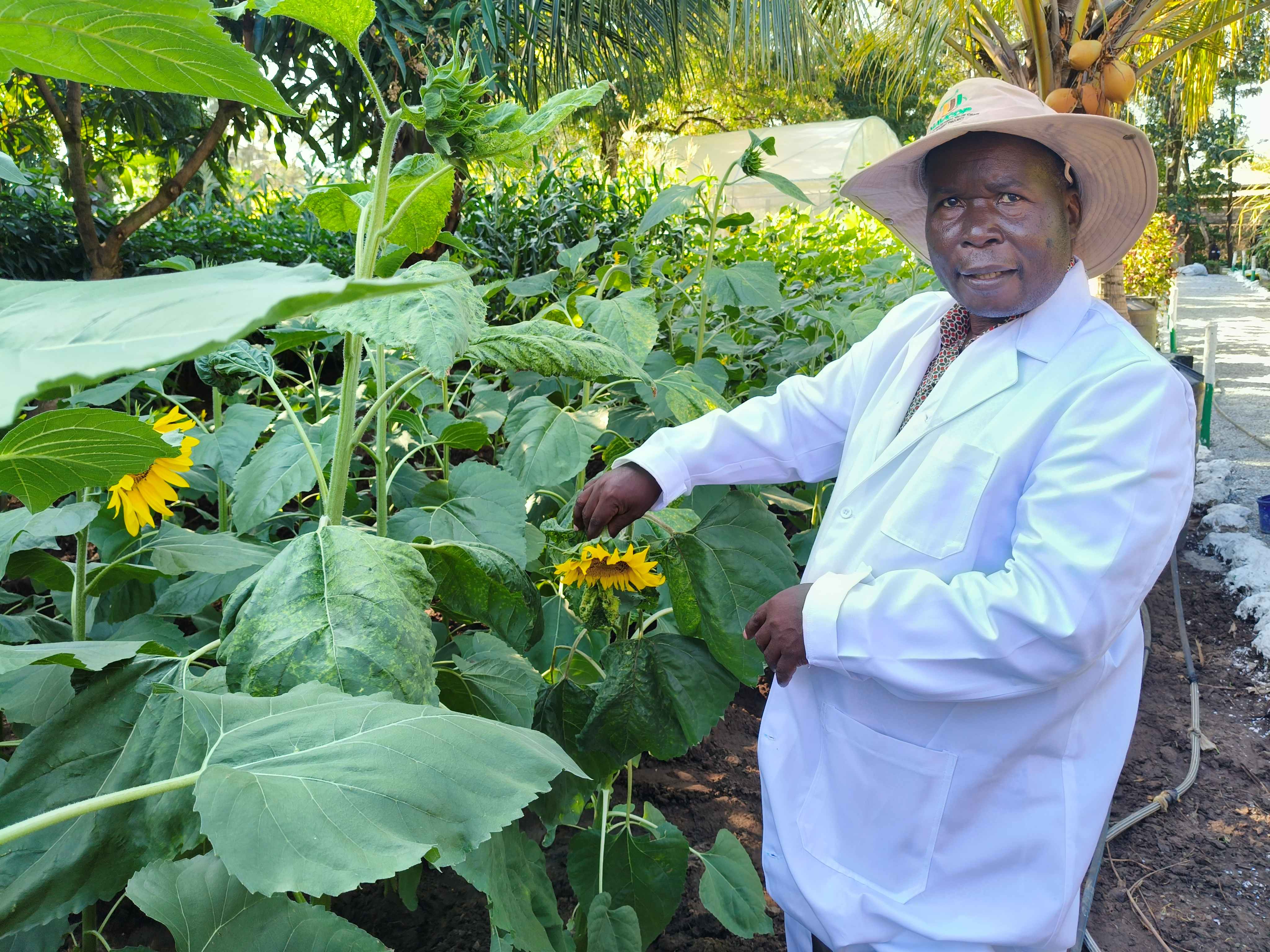
Kalro Industrial Crops Research Institute director Simon
Omondi at the Jomo Kenyatta Mkomani Showground on Friday / BRIAN OTIENO
Farmers at the Coast should now be able to grow sunflowers in bulk, increasing the country’s production and improving the economy in the process.
Sunflower, which the Kenya Agricultural and Livestock Research Organisation describes as a golden crop, is used in the production of edible oil.
Kenya imports more than 70 per cent of the edible oil found in the country and sunflower contributes to about 25 per cent of it.
“Kalro has taken up that challenge by producing varieties of sunflower, which are certified by Kephis (Kenya Plant Health Inspectorate Service) and are being disseminated to farmers in various regions for the purpose of improving production,” Kalro Industrial Crops Research Institute director Simon Omondi said on Friday.
He spoke at the Jomo Kenyatta Mkomani Showground ahead of the Mombasa International ASK Show set for September 3 to 7.
This year’s theme is ‘Promoting climate-smart agriculture and trade initiatives for sustainable economic growth’.
Kalro has developed a variety of sunflower that is suitable for the Coastal region’s climatic conditions.
The Kenya Fedha variety takes about 100 days to mature, but can take a much shorter time at the Coast.
It is open-pollinated, suited to medium to high altitude, has uniform maturity and has a high oil content of about 38 per cent.
“You can do two crops in a year. This way you cushion yourself in terms of income,” the research director said.
The crop needs about 3.5kg to 4kg of seeds per acre for planting and spacing of 75cm by 30cm.
To deal with the biggest challenge of sunflowers—birds—Kalro has ensured that when the Kenya Fedha variety matures, it looks downwards to prevent the exposure of the seed to birds.
“That is why it is recommended that when planting sunflower, ensure you plant as a group, so as to spread the risk,” Omondi said.
The Kenya Kwanza government, under the Bottom-Up Economic Transformation Agenda, seeks to reduce the importation of edible oil, to encourage more local production.
One of the Beta pillars is sunflower production.
The total area under production is 40,000 hectares, with annual production of 40,000 tonnes, which is not sufficient.
“That is why in the government plans, if we are able to avail about 5,000 metric tonnes of seed to farmers, this will go a long way to increasing the volumes needed to achieve the agenda of reducing imports significantly,” Omondi said.
Sunflower is not only the main source of edible oil but also has a high demand in the feed industry in the form of sunflower cake, making its demand globally extremely high.
“Most of our feed millers, who produce feeds for livestock, import sunflower cake from our neighbouring countries.
“Therefore, by disseminating improved varieties that Kalro has, such as Kenya Fedha, we are able to contribute to an economy that is vibrant, imports less and grows more,” Omondi said.
To scale up sunflower farming at the Coast, Kalro is working with stakeholders including Kephis, the Ministry of Agriculture and others interested in investing in the edible oil and feed manufacturing industry.
Kalro has developed a bundle of climate-smart technologies that have high producing, disease tolerant and early maturing seed varieties.
These include livestock species which are climate-ready, meaning they are adapted to different climatic conditions.
There are also management practices that farmers can apply to ensure they become resilient and adapt to climatic changes.











